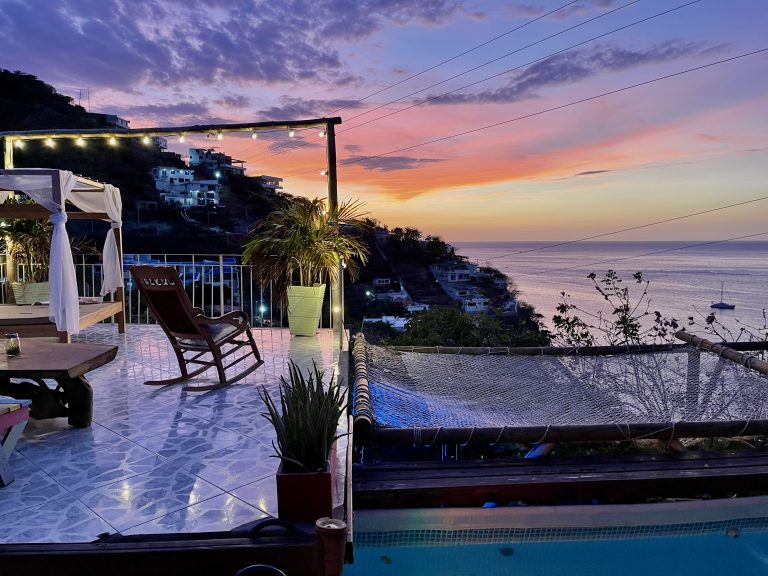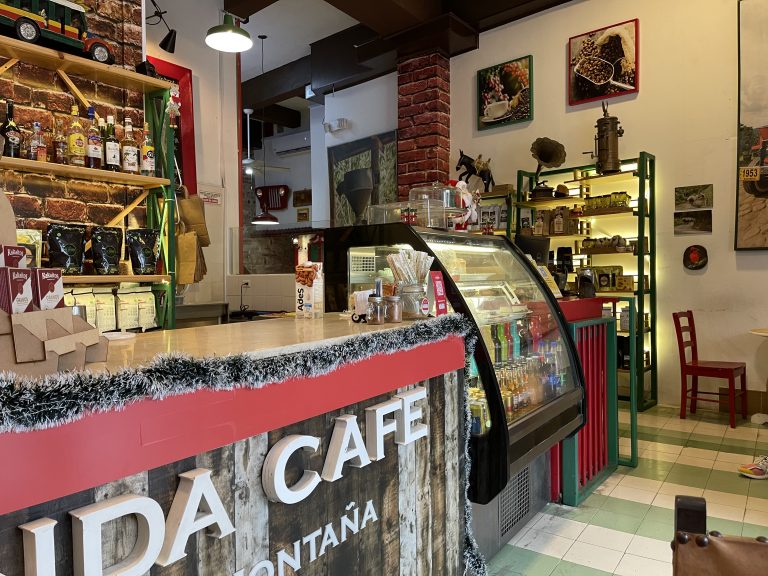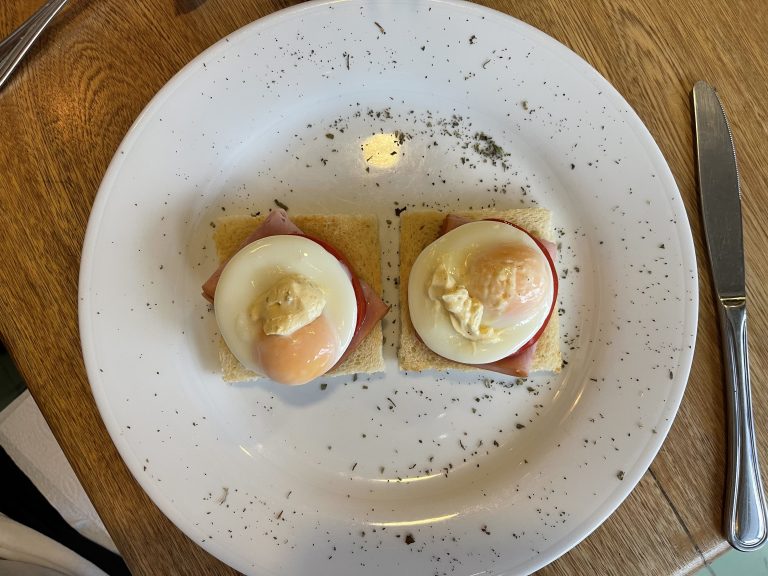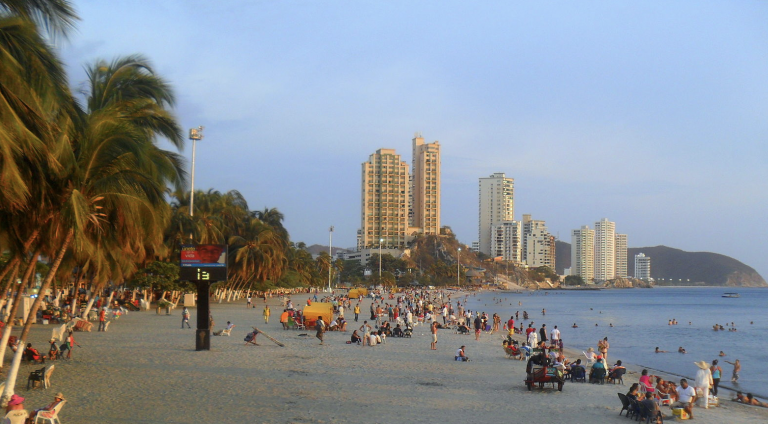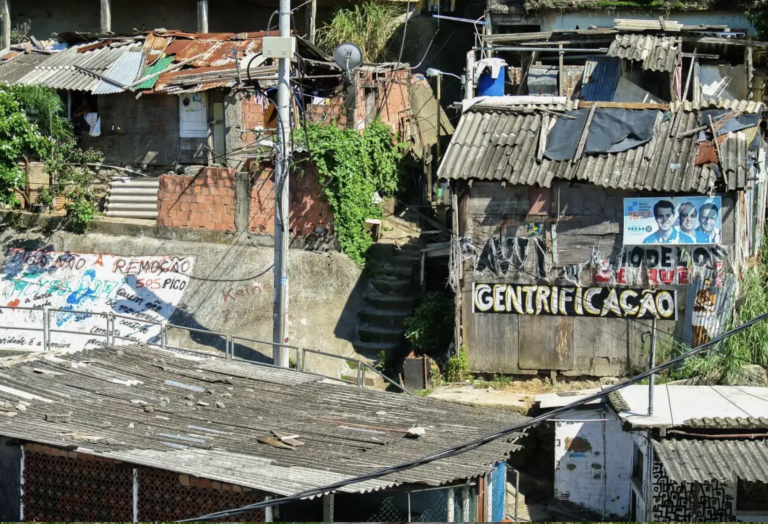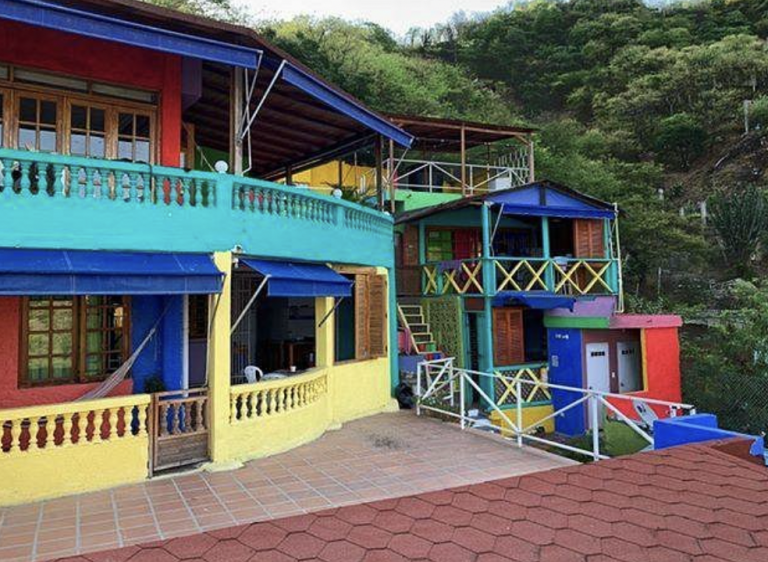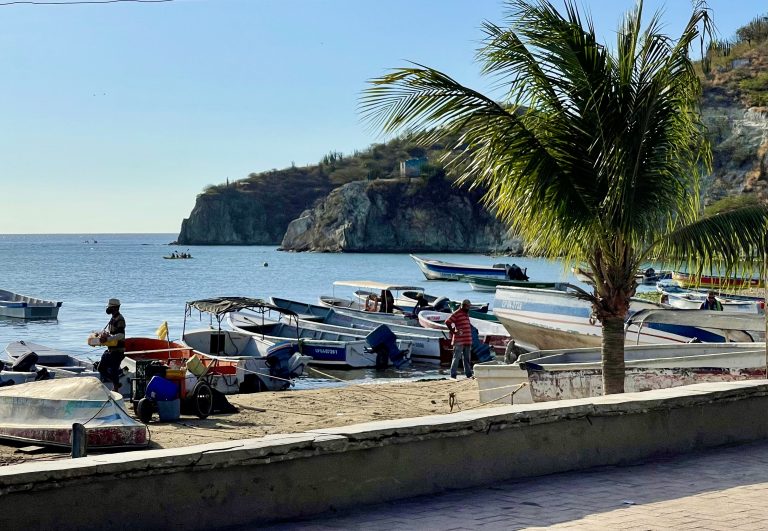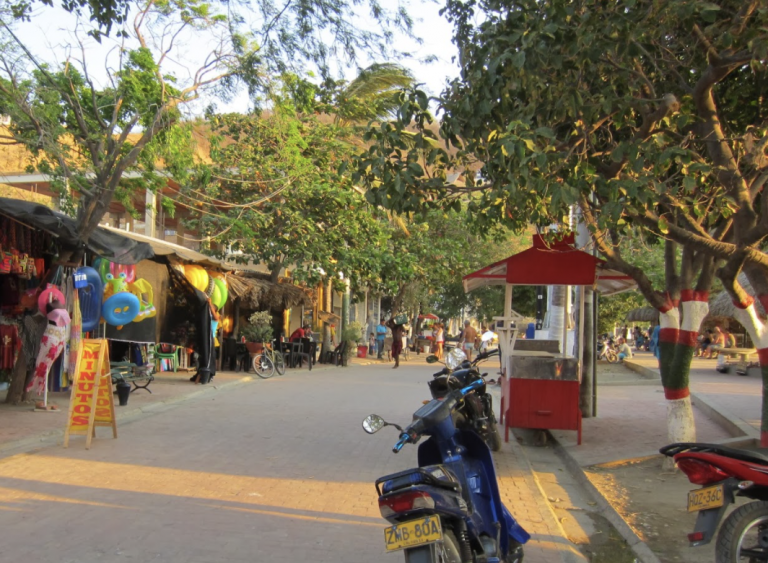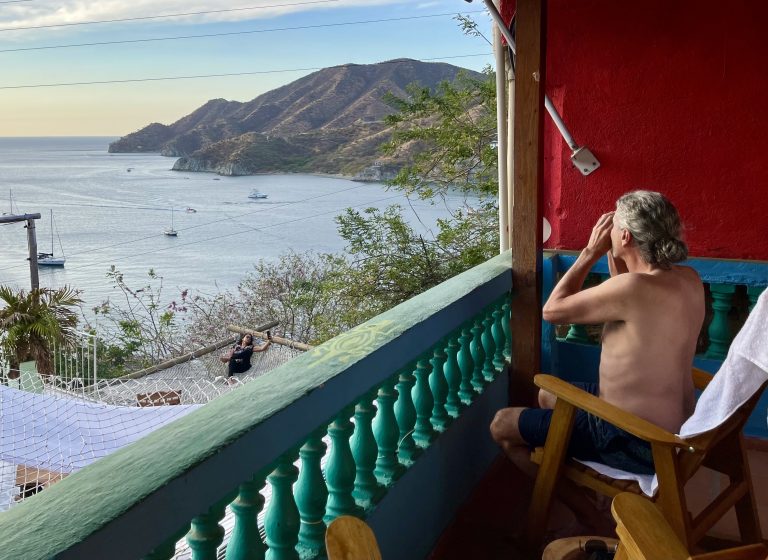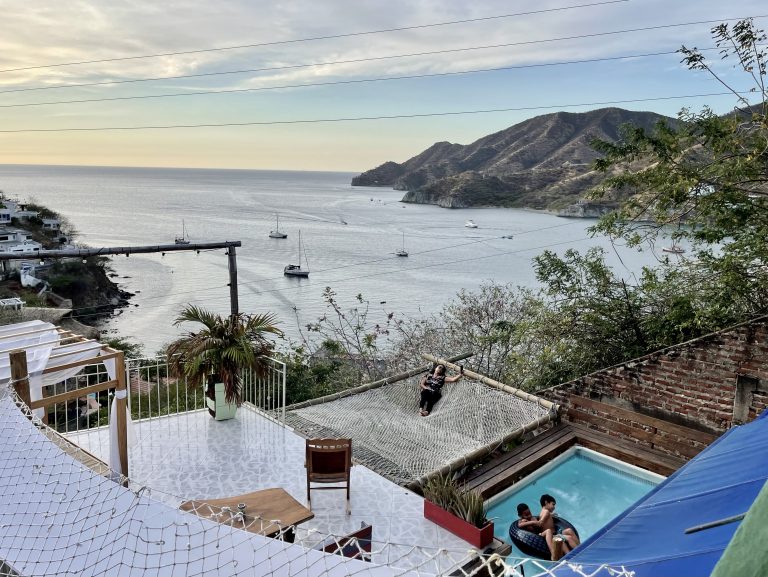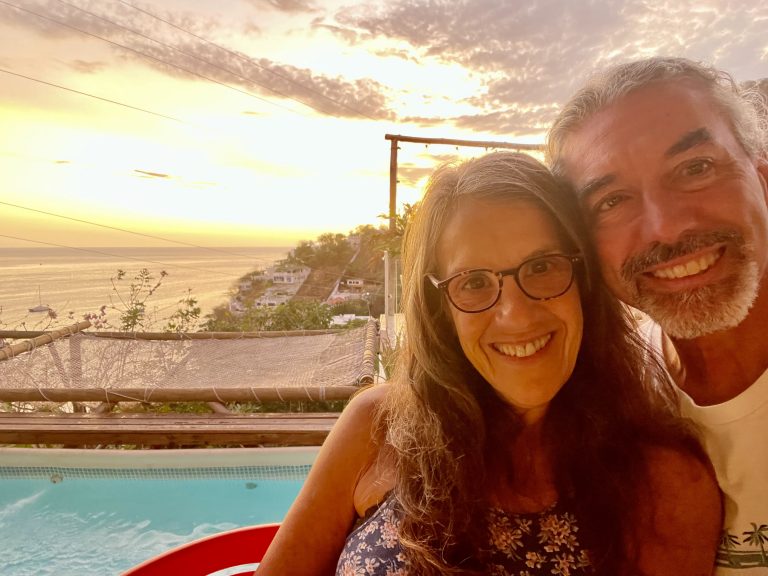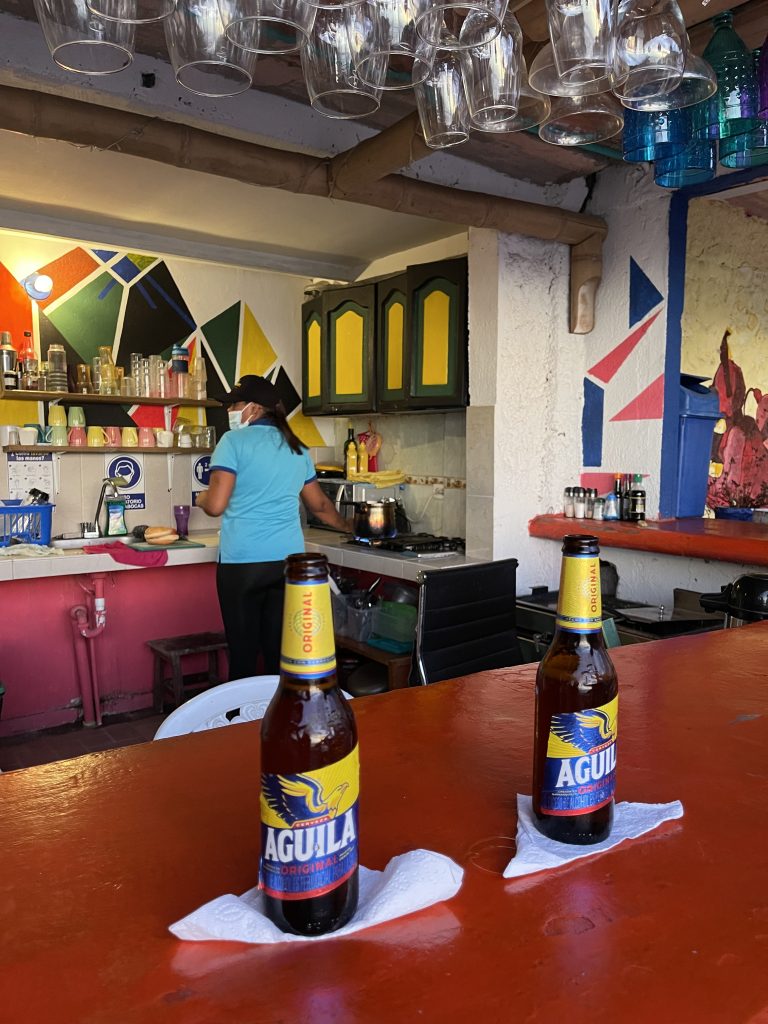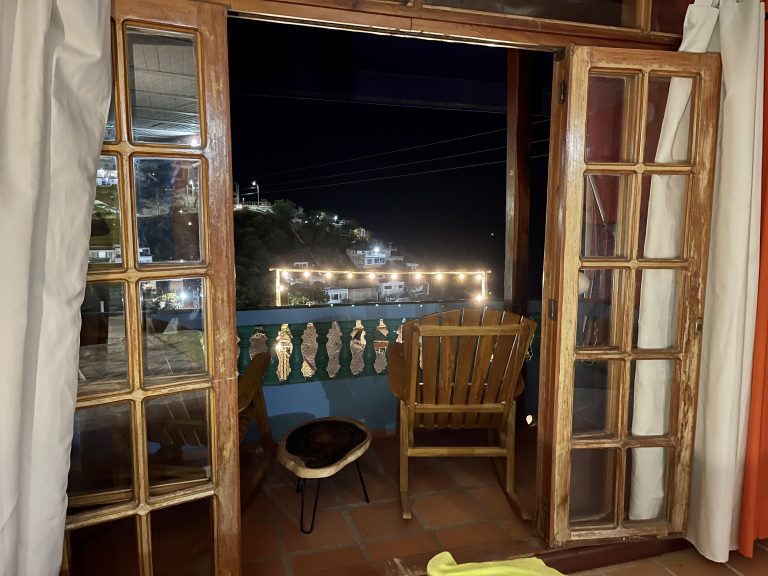January 13, 2022
We woke bleary-eyed around 7 am. Today, we wanted to get an early start to our day and catch a bus to Santa Marta, a half-day’s journey northeast along the Caribbean coast.
Near our hotel, we returned to the café that lacked water yesterday. This time it was open and we found excellent coffee and breakfast. I had two eggs on toast with tomato and a tiny pat of hollandaise, which the menu translated into “Dutch sauce.”
Checkout was an exercise in language barriers. We presented our keys to the hostess who sat at a tiny desk, took the keys, said something unintelligible, then proceeded to enter information on her computer while we sat. Waiting for our receipt or at least a gracias, we sat in the uncomfortable wooden chairs, luggage at our feet. Finally, after 15 minutes of tapping away at her computer, we asked her if there was a problem. Surprised, she looked up and said no. We’d been checked out for the last 14 minutes.
A $2 US Uber ride got us to the bus station where we presented our passports, Covid vaccination cards and more than a tenth of our million pesos (about $30 US) for the ride to Santa Marta. Susan had read it should take five hours. That’s Colombian time, though, which meant we shouldn’t be surprised if it took much longer for absolutely no reason – so we planned for 7+ and hoped for 5. Susan also read that the buses were cramped, but we were led to a nice Mercedes bus with air conditioning and a driver who apparently wanted to set the land speed record to Santa Marta. Following the coast, we headed northeast on a decent two-lane highway, with the driver tailgating close enough for me to see the dashboard of the car in front of us. He passed everything possible, notwithstanding hills, curves or No Passing signs.
Half the vehicles on the road were small motorcycles and we’d occasionally have to stop at checkpoints for a head count (frustrating Mario Andretti). Ancient mixed with modern as old men leading donkey carts and pescadores selling fish on strings from the nearby ocean appeared alongside a road that warned of electronic speed cameras. Speed limits were frequently less than 90 kmh (about 55 mph) and as we got closer to the city of Barranquilla traffic increased, much to the annoyance of our driver. When we arrived in Barranquilla, we dropped off some passengers and stopped for a “cinco minuto” (five-minute) bathroom break that turned out to be 20 minutes. Barranquilla has a population of over two million and it was known years ago as a cocaine smuggling port.
For the next hour, traffic was heavy with large trucks, and our driver was inches from their bumpers until he passed. I tried not to think about headlines I’d seen where (insert large number) people were killed in (insert developing country) when the bus driver hit a semi or rolled down a cliff. But soon the road opened and we cruised along while I read a book to keep from looking through the windshield.
As we approached Santa Marta, the road curved up and over hills before dropping back down to the pretty scruffy-looking seaside town. We exited the bus on a busy street in Santa Marta and instantly a taxi driver asked where we were headed. We said “Tagonga” and he quoted us $50,000 COP (Colombian pesos). We knew from Susan’s research that the cost should be $15-20,000 COP, so we dragged our suitcases down the road a block and flagged down a tiny local taxi (Uber does not operate in Santa Marta) who quoted us $15,000 COP (about US$5.00). Pro tip: Never go with the first taxi that pounces.
Leaving Santa Marta, our taxi climbed into the foothills, then dropped into the small fishing village of Tagonga, which we learned was the oldest city in Colombia, founded in 1525. Our taxi dropped us off at a closed gate at the base of a steep hill. We rang a bell and were greeted by a woman who spoke no English but who let us in and escorted us up to the hostel.
To get up to there, we climbed a hundred feet of steep narrow stairs. By the time we reached the top, I was huffing and sweating, carrying both suitcases. We were shown to our private room that overlooked the ocean a quarter mile away. The room was sparse but spacious and decidedly funky though clean – and had a small AC unit that we quickly switched on.
The five-hour white-knuckle bus ride had made us antsy to take a walk. So after dropping off our bags we went back down the stairs and then down the steep narrow road, avoiding dozens of motorcycles, cars, trucks and taxis all being driven by aggressive Colombians, and into the beach town of barely 5,000 people. Locals and Latino tourists relaxed outside of tiendas and restaurants. Few of the streets were paved.
Tagonga is part of what is called the Gringo Trail, known for American, European and Israeli tourists, though we saw none and felt like we stuck out like sore gringo thumbs. We were hot and thirsty and had forgotten our water bottle so instead we paid $0.50 US for two large cups of the sweetest mango pieces we’d ever had.
Walking back up the road, we found the rough stairs that we’d missed on the way down that we were told led to the beach. The next trip to the sea we would walk far less on the twisting, steep road.
At the hostel, we changed into bathing suits and took a dip in the tiny pool, washing off travel and village dust. We realized the hostel was mostly geared toward families, and various children enjoyed the pool as well. We briefly tried out the large hammock but it was too hot to sunbathe for long.
We spent a few hours enjoying the view from our balcony before turning in for the night. Long travel days tend to make us tired and we hoped for a good night’s sleep.

